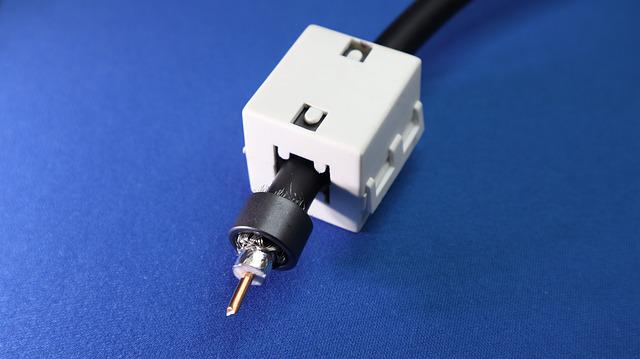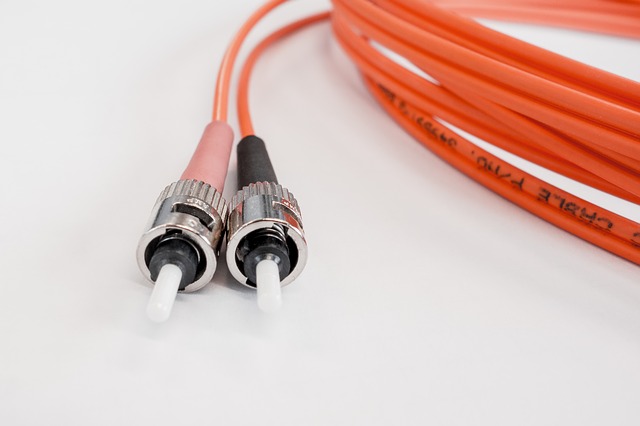3 Types of Network Cables and Their Functions
Network cables are an important component in the development of computer networks. Because there are several types of network cables that are commonly used for the data transmission process. Today, wired networks are still widely used to connect devices to the internet.
Network cable is a computer hardware component that has the main function as a connector. This cable acts as a liaison for the transmission process between the server and the client and vice versa.
There are several types of network cables on the market. Each cable certainly has a different function and use. Therefore, you can’t go wrong in choosing a cable to connect a computer network.
Table of Contents
Definition of Network Cables
Before discussing further about the types of network cables, we need to first review the meaning of network cables. The goal is that you can understand in more detail the meaning of the network cable.
Network cable is a hardware device in the form of an elongated cable and has a function as a network connection. The cable for the network only has a function as a network connection. This type of cable generally cannot be used for other functions such as electrical connections or others.
Network cables are used to connect one or more computers with various network topologies used. Cables for networks do not only connect between computer devices.
But it can also be used to connect connections between islands or even between countries. So that the process of transferring data on the internet can be done more quickly and effectively.
Network Cable Type
In general, there are several types of network cables commonly used in computer networks. Each type of cable certainly has a different function and use according to its purpose.
In addition, the use of network cables is also adjusted to the topology of the computer network used. For example, a Bus topology will use a different cable with a ring, tree, or other type of topology.
For information, here are some types of cables for networks that you need to know.
1. Types of Coaxial Network Cable Model

The type of cable for the first network you need to know is coaxial cable. In short, coaxial cable is a type of network cable consisting of 2 layers of conductors. These two layers will serve as an intermediary medium for the data transfer process.
The first layer is positioned in the middle of the cable in the form of solid copper wire wrapped by an insulator layer. The second layer is above the insulating layer made of metal commonly called metal shielded whose function is to prevent interference from outside.
The working principle of coaxial cable is to deliver an electrical signal from the source to the destination. This cable can be used to connect between computer devices.
Generally, this coaxial cable is often used for network use with high bandwidth because it is safer from all interference.
Although it has a wide use, nowadays coaxial cable has begun to be abandoned by many users because BNC ports on computer and network devices are rarely found. Moreover, the installation of coaxial cable requires special skills and is not as easy as installing other connector cables.
Advantages of Coaxial Cable
Coaxial cable has several advantages as a network connector. For information, here are some of the advantages of this types of network cable :
• The price is cheaper when compared to other types of cables.
• Faster range of speeds and data transmission.
• Lower risk of signal loss
• Has a longer service life
The existence of these advantages makes the use of coaxial cable to be quite common in network technology.
Disadvantages of Coaxial Cable
Although it offers advantages in use, this types of network cables also has disadvantages. For information, here are some of the disadvantages of coaxial cable for networks.
• Vulnerable to be affected by weather, temperature, and even load
• Installation of BNC connectors is relatively difficult
• Although the cable is cheap, it requires high maintenance costs.
• Requires an additional repeater in the installation process.
The advantages and disadvantages of coaxial cable are important factors to consider when choosing a network cable.
2. Twisted Pair Cable

The next type of network cable is Twisted Pair. This type of cable is increasingly being used in network construction because of a number of advantages it offers.
Twisted Pair is a type of internet network cable in which it consists of several pairs of wires with a total of 8 wires that have different colors and are wrapped in pairs.
It aims to reduce the occurrence of induction and leakage that occurs in the cable. So that the data transfer process can be done with optimal speed and maximum from data server to the client.
This Twisted Pair cable has replaced the role of coaxial cable in building computer networks because of its speed, reliability and ease of installation.
Twisted pair cable has various types of categories with different data transmission capabilities. The latest generation variants can even have data transmission speeds of up to 10 Gbps. So this types of network cable has been choose to provide connection from one computer to another.
Twisted Pair can also be grouped into three different types of categories. Each of these categories types of network cable is as follows:
Unshielded Twisted Pair (UTP)
Unshielded Twisted Pair Cable is a type of twisted pair cable that is not equipped with a shield to protect against the threat of electromagnetic wave interference. In general, this types of network cable has a relatively affordable price.
So that UTP cables are widely used in home or office scale computer networks that require low costs.
Shielded Twisted Pair (STP)
Shielded Twisted Pair is a type of network cable that is equipped with a shield to protect against the threat of electromagnetic wave interference. This types of network cable has a more expensive price than the UTP type because it is equipped with a shield that wraps around the length of the cable.
The aluminum foil on the STP cable wraps around each pair of copper wires. So there will be 4 aluminum shielded pairs in the cable. This will make the cable more protected and can deliver the signal more optimally.
This makes STP type cables stiffer and heavier. This types of network cable is suitable for use in large-scale companies that require maximum performance.
Currently the most advanced version of the STP type cable is a cable with the CAT6 code. This types of network cables is capable of transmitting data up to 100Gbps speeds with a maximum cable length of up to 100 meters.
Foiled Twisted Pair (FTP)
The next type of Twisted Pair cable is Foiled Twisted Pair (FTP). Foiled Twisted Pair is a type of cable that is equipped with a protective aluminum foil on the outside of the cable pair so that it is more resistant to electromagnetic wave interference.
The existence of a protector in the form of aluminum foil will make the data transmission process faster and optimally. So that potential loss can be avoided. This types of network cable can be a good choice over UTP but is also more expensive.
3. Fiber Optic Cable

The next types of network cable is fiber optic. Fiber optic cable uses a material made of glass or very small plastic measuring 120 micrometers so that in transmitting data it can be faster than other types of cables.
Electrical signals such as television, voice and data are converted into optical signals using an optical transmitter and then transmitted at the speed of light. So that the speed of data transmission will be done more optimally.
The speed of data transfer from optical cables can even reach 100Gbps with distances up to thousands of kilometers. This is what makes many internet providers choose optical types of network cable to provide fast and quality internet services.
The core of the fiber optic cable is covered with various layers. The first layer is referred to as the cladding. The cladding acts as a reflector that reflects light along the cable, so that the light stays focused on the core. In the next layer there is a buffer that acts to protect the cladding and core from damage and moisture.
The next layer is a strength member which also plays a role in protecting the cladding and core from stresses that may occur during the installation process. A set of optical cables is then wrapped with a layer called a jacket which not only serves to protect the cable from the outside environment, but also prevents light leakage from the core.
Optimal data transmission speed and cable resistance from electromagnetic waves make fiber optic very effective for large-scale networks. However, its implementation is still quite difficult and relatively expensive.
Advantages of Fiber Optic Cable
For additional information, here are some of the advantages possessed by fiber optic cables:
- • High speed data transmission.
• Has a large bandwidth value up to Gigabit
• Has a wider coverage area.
• More durable from interference by external conditions
• Relatively cheaper maintenance costs
• Strong security features
• Able to withstand electromagnetic wave interference
Weaknesses of Optical Cable
• The price of optical cable is very expensive when compared to other types of network cables
• The installation process is quite complicated
• When installation requires a large investment
• If there is damage, not just any technician can make repairs
Conclusion
One of the important factors to consider when building a computer network is the network cable. The selection of the right cable will make the construction process and network topology performance more optimal.
That is a complete discussion of the types of network cables commonly used in computer topologies. Now with this review, you don’t need to be confused anymore with the understanding and types of cables for networks.
